Fashion Media (Fall 2023)
RESPONSIBLE – fashion magazine
Magazine that focuses on responsibility and sustainability, with a particular focus on responsible garment production.
Created by: Mikala, Alberte, Katrine, Robin, and Mara
Click on the picture below to see the magazine.

Fair Fashion Guide
A website dedicated to raising awareness of the often-overlooked dimensions of sustainability.
Created by: Johanne, Signe, Sille, and Marabel
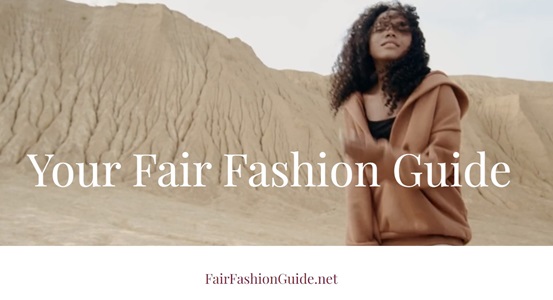
CONCIOUS – fashion magazine
A political magazine which deals with issues within the fashion industry, such as diversity, race, gender, and sustainability.
Created by: Sofie and Melisse
Click on the picture below to see the magazine.

And such – Gender Positive Fashion
Website about how gendered fashion has changed through history and can change going forward.
Created by: Shutopa and Emma-Marie
Find ud on Instagram here.
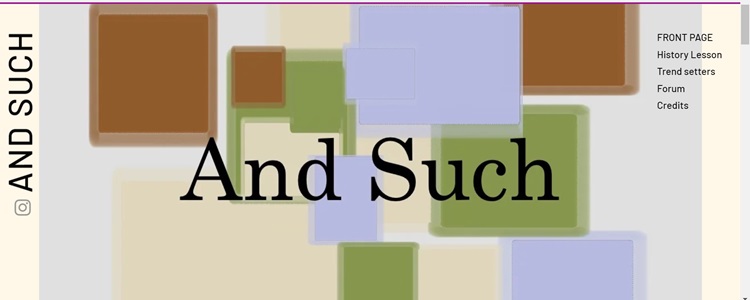
CATERORY IS – fashion magazine
A magazine to highlight problems with gendered clothing.
Created by: Astrid, Clara, and Mathias
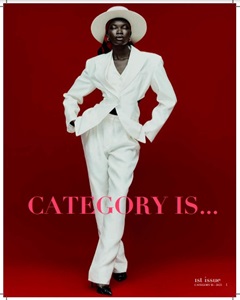
Silhouette – modeling and beauty
The evolution of the stereotypical model in fashion and beauty standards.
Created by: Anita, Katrine & Karen

-------------------------------------------------------------------------------
Fashion Media (Fall 2022)

UnEdit is a podcast made by two BA Design Culture and Economics students. In the episodes, one of the two hosts will take you through a topic within the realm of fashion and its relation to mental health. The episodes will include theoretical evidence, personal experiences, and opinions.
Sustainable Shopping - by Mathilde Stine & Anton
This video included a segment on Swap Spot, a volunteer-run clothing swapping organization in Kolding! The video provides a good balance between the negative examples in the industry and some positive examples of what people can do to change things.
Re:Touch – by Minea and Amanda
This blog takes a critical look at retouching within fashion media. We have created a community and safe space where everyone is welcome to join the conversation around the harm on mental health due to the daily exposure to retouched images in fashion magazines, filters on social media, and photoshopped images all over the internet.

Just Hair – by Salma, Heidi, Amal
The aim of our blog is to spark conversation about the influences of representation in fashion media, and awareness on the current stigma regarding the phrase "Just Hair."

The Critical Fashion Forum – by Kamilla, Sara, Emil, Klara
The Critical Fashion Forum is a website, created by four fashion students at SDU Kolding. Through this website, we wish to enlighten the reader by bringing critical perspectives on social media and its affection on the way we consume fashion today. Thereby looking at social media advertisements to investigate the fine line between inspiration and manipulation.

-------------------------------------------------------------------------------
Fashion History (Spring 2022)
 The Cheongsam and Cultural Appropriation - by Helena Nørgreen
The Cheongsam and Cultural Appropriation - by Helena Nørgreen
Cheongsam means “long dress” in Cantonese, it is also known as “qipao” or “The Suzie Wong dress.” It is primarily worn by Chinese women. Contrary to the otherwise very restrictive clothing women were supposed to wear, the Cheongsam represented gender equality. The cheongsam became popular as a politicized garment for women. From the 1930s through the 1940s, the cheongsam became the dominant female clothing style of the urban elite as it embodied modernity while honoring cultural traditions. The issue of cultural appropriation and the flattening of Asian culture, as well as the association of the cheongsam with overt sexuality, continue to shape mainstream perceptions of the cheongsam today. The clothing form, which had evolved as a symbol of liberty and equality for women, had now become a symbol of limitation. The modern cheongsam’s tightness restricted women’s movement and required them to adopt a new style of walking, sitting, standing, and bending down. The cheongsam’s portrayal in mainstream Western culture continued to associate the clothing with sexual availability.
 Women in Suits - by Rebekka, Anton, Mathilde
Women in Suits - by Rebekka, Anton, Mathilde
The earliest form of suit for women is the Riding Habit which was invented in the 1600s. Around 1870-1890 the French actress Sarah Bernhardt wore a custom-made suit with pants. She called it her boys-clothes. She received backlash for wearing this menswear. In 1910, the American Ladies Tailors Association made the Suffragette suit that allowed women to move more freely. Suits were globally seen as symbol of Western. Ghandi was calling for Indians not only to return all honours and emblems granted to them by the imperial government, but also to dress in simple homespun peasant dress instead of the Western clothes. In 1967 Yves Saint Laurent designed “Le Smoking,” the first tuxedo designed for women.
 History of Jeans - by Kamilla, Klara, Sara, Emil
History of Jeans - by Kamilla, Klara, Sara, Emil
A timeline of the history of jeans with focus on the textile and its origin, as well as its venture into the fashion industry and hip-hop culture. The timeline also includes a focus on the way it has been adopted by women throughout the years. This timeline will seek to answer the following research questions: Has the cultural and symbolic meaning of jeans changed since their invention? How and why were the jeans adopted into the women’s wardrobe? How did the jeans become a fashion item? How did they become a part of hip hop and pop culture?
 South Korean Hanbok - by Heidi, Salma, Amal
South Korean Hanbok - by Heidi, Salma, AmalFrom the Joseon dynasty, the beautiful South Korean Hanbok is known for its lively colours and straight lines and voluminous shape. Today it is seen at ceremonial events, parties, or festivals, and it has made frequent appearances in entertainment globally. We aim to cover the Hanbok’s different aspects beyond the surface, to understand the dress in its different contexts of time and history. The origin of the hanbok can be traced back to the period of “The Three Kingdoms” (57 B.C.E - 668C.E). The hanbok was presented to the Korean peninsula through the steppe nomadic culture, whereas the practical necessities from the cold weather was implemented in the style of the hanbok. Several artifacts from the wall of Goguryeo kingdom (37 B.C.E- 668 C.E) shows men and women wearing the jeogori (upper garment) and the men wearing the baji (pants) and the women wearing the chima (the long skirts).
 History of the Kimono - by Lina, Miranda, Maria, Valon
History of the Kimono - by Lina, Miranda, Maria, Valon
Our reason for choosing this topic is partially because we want to disprove the theory that all fashion is created in the West, by showing how the kimono has influenced Western fashion. We also want to bring attention to the cultural appropriation taking place in the fashion industry. The Japanese kimono is one of the world's most recognizable traditional garments. “Kimono” originally meant “something you wear.” A kimono is a long Japanese traditional dress which wraps around the body and has distinctively voluminous sleeves. It is tied around the waist with the Obi belt. About a century ago, most people in Japan wore the kimono every day. Now, people wear casual clothing in Japan most of the time. However, they still wear the kimono for special occasions such as formal ceremonies, but also for fun and fashion. The Kimono is worn by men and women alike, but in this presentation we have chosen to focus primarily on the female dress.
 Tattoos - by Carolina, Maria, Stine
Tattoos - by Carolina, Maria, Stine
Based on our research on tribal tattoos from Asia and Africa, we want to investigate how tattoos have become a part of fashion, and how has the meaning of tattoos changed? How was the development in tribal tattoos? (based on our 2 examples) How are Asian and African tattoos similar? What are the relation between the meaning of tattoos in the past and the present?
 Reinvention of the skirt - by Amanda and Minea
Reinvention of the skirt - by Amanda and Minea
Cloth resembling the “skirt” has been worn by both men and women in the non-western world for centuries, but in the west, the skirt is seen as either a cultural or feminine piece of clothing – our research question is therefore: is it possible to make the skirt a gender-fluid object in the western world? It appears that both men and women wore simple loincloths, possibly animal skins, and simple wrap-around garments such as dresses, skirts and hip-wraps. The original kilt in Scotland was called the tartan kilt and was worn with knee-high socks, a knife called a sgiandu, and a bag called a sporran which is worn on the stomach. Today, Alok’s movement to #DeGenderFashion is important. This movement isn't just for trans and non-binary people. It’s for everyone to wear whatever they want and determine what that means for them.
 Working conditions in Bangladesh - by Sara, Pennie, Nicoline, Sofie
Working conditions in Bangladesh - by Sara, Pennie, Nicoline, Sofie
The purpose of this timeline is to look into the working environment in Bangladesh. Some central questions are: how has the garment industry grown in terms of number of employees and value exported over the years? What type of working environment was the reality? What happened at Rana Plaza in 2013? Which actions were taken after the collapse? And has anything improved? The textile and clothing sector is by far the most important industry in Bangladesh, accounting for 85.9 percent of all exports, which makes it the second largest garment exporter in the world, with approximately 60 percent of all production going to Europe and 23 percent to the United States (D’Ambrogio, 2014). The collapse of Rana Plaza in 2013, which was considered the worst disaster ever in the fashion industry, brought attention back to the plight and working conditions of clothing workers in the country. It is estimated that over 1,100 people died and that 2,000 more were severely injured, many becoming permanently disabled (Aizama and Tripathi, 2015).
 Men in Heels - by Tenna
Men in Heels - by Tenna
This timeline investigates why the high heel was invented and where it originated. What is the historical difference between men and women in heels? Why was it important for women to wear heels? How are high heels represented in men today? The earliest documented phenomenon with high heels is in ancient Iran (10th century), then known as Persia. The high heel was made for the military, for the soldiers who rode horses, so they did not slip out of the stirrups. They rose in the stirrups while storming against the enemy (with bow and arrow), and they used the high heels to prevent from falling through the stirrup. This was exclusively for practical reasons.
Fashion and Media (Fall 2021)
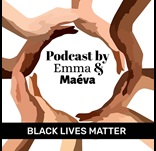
The Cultural Space – by Maéva, Rachel, Gizem and Emma
This website is dedicated to different topics surrounding black culture such as cultural appropriation, black hair culture, and much more. It is a field and project we are passionate about, and we hope to inspire, educate, and inform others.
 Body Ideals – by Emma, Freja, and Sofie
Body Ideals – by Emma, Freja, and Sofie
We are investigating the modern perception of female body ideals and their consequences. You can also find our research and analysis on our Instagram account @Bodyid3als.
 Re-Fashion – by Jacob, Sandra, Hannah, Laura, Anna, Catrine, Emma
Re-Fashion – by Jacob, Sandra, Hannah, Laura, Anna, Catrine, Emma
Sustainability is a tough concept to agree on and in the Fashion system. The media lacks educational tools to inform the fashion system on regulations and all parts on how it can change. Therefore, we as a collaborative platform want to inform others on re-fashioning of fashion. We created this media platform for the industry, companies, and consumers in the fashion system, to come together and work towards change.
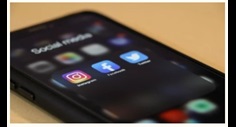
Our main goal with this website, is to create a space for us to be critical of social media. In this round, we break down the media platform Instagram, whereas we put some topics up for debate and critical speculation.
-------------------------------------------------------------------------------
Fashion and Creativity (Fall 2021)
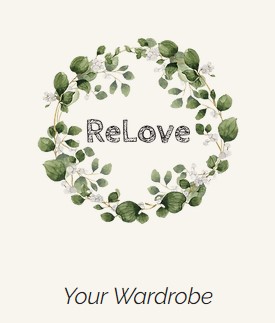
ReLove Your Wardrobe – by Mia, Anja, Ina, and Rachel
BLOG
INSTAGRAM
Our digital project consists of a website/blog and an Instagram feed that works together with the blog. ReLove is a sustainable digital project, where we argue that a creative set of eyes can contribute to a sustainable world and wardrobe. We find this an important issue because a great amount of people in the world, including ourselves, need inspiration to rediscover love for the clothing we once bought for a reason, but have left hanging in the closet collecting dust, instead of throwing clothing out and buying new.
 Capitalism vs. Creativity – by Søren and Sara
Capitalism vs. Creativity – by Søren and Sara
This academic blog is a collection of articles focusing on the paradox of capitalism and creativity in the fashion industry. Capitalism and creativity can in many ways be contradictory because they don't necessarily have the same intention. In some ways capitalism and creativity are also dependent on each other because every designer has to make a profit on their creativity in order to live off it.
 Creativity & The Well-Being of Hospitalized Children – by Simone
Creativity & The Well-Being of Hospitalized Children – by Simone
This podcast investigates the relationship between creativity and the well-being of hospitalized children. Based on a collaboration with Kreaheltene, a part of The Danish Child Accident Fond, I interview Cathrine Faaborg, who works as a Kreahelt at the Children and Youth Hospice "Strandbakkehuset" and Mette Sorang Kjær, who works as a Child Welfare Coordinator at H.C. Andersen Children and Youth Hospital (OUH). I want to understand how health and creativity can be linked together and whether creativity can foster well-being.
 The Sustaining Ability – by Nanna, Sofie, and Laila
The Sustaining Ability – by Nanna, Sofie, and Laila
We have made it our mission to make it easier for consumers to navigate the sustainable rhetoric of fashion culture and hopefully make sustainability more approachable. We want to show different facets and approaches to sustainability, challenging the production-based discourse often taken by fashion brands. We want to make it easier to navigate the paradox that lies within the fashion industry, so all of you can make more nuanced dressing decisions.
-------------------------------------------------------------------------------
Fashion History (Spring 2021): Digital Timelines
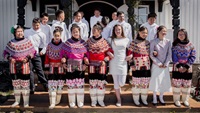
The History of Dress in Greenland (by Jacob Krebs)
A timeline of the evolution of dress in Greenland. Focusing on the dress of ancient times, the colonial influence and the official national dress. The history of dress in Greenland spans over thousands of years and multiple colonial powers. Researching their history of dress shows clever inventions in super harsh arctic climates, but it is also a history heavily occupied by European colonialism. The following timeline will highlight this story.
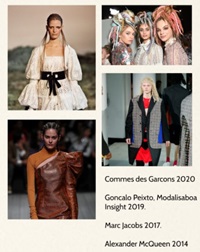
African Hairstyles & Cultural appropriation (by Sandra Jäger & Maéva Amélie Djaba).
Why is cultural appropriation so discussed in today's society? Our presentation focuses on the history of African Hairstyles with examples and cases through time in the fashion world and social media. We also focus on current perspectives today in order to understand the history and to analyze concrete examples and their causes.
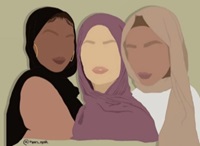
History of the Hijab Legislations (by Sofie, Rebekka, & Celine).
The hijab has been a victim of different types of legislation, which is significant as clothes for many is seen as something liberating and something to express one’s identity through. Our project investigates the contradictory types of legislation as well as the consequences they carry.
-------------------------------------------------------------------------------
Fashion Media (Fall 2020):
 Disrupting the Fashion Industry – We have created this webpage in the hopes of adding to the discussion about hegemony in the fashion industry, and to give our insights into how the industry is changing. In recent years fashion and fashion publishing has faced scrutiny as consumers have become increasingly more aware of the social and ethical injustices in society. More and more brands find themselves appropriating cultures or creating content which is out of touch with its audience. Our aim with this website is to look into some of these problems and the people behind them, to find out what the future of the fashion industry might look like, after the established has fallen.
Disrupting the Fashion Industry – We have created this webpage in the hopes of adding to the discussion about hegemony in the fashion industry, and to give our insights into how the industry is changing. In recent years fashion and fashion publishing has faced scrutiny as consumers have become increasingly more aware of the social and ethical injustices in society. More and more brands find themselves appropriating cultures or creating content which is out of touch with its audience. Our aim with this website is to look into some of these problems and the people behind them, to find out what the future of the fashion industry might look like, after the established has fallen.
 The View on Body Image – We are three students from SDU kolding bachelor of designculture and economics, who made this blog as a part of the course Fashion Media. The focus of our research have been on body positivity and how it can be seen in the fashion industry from influencers, to photoshop to magazines. The fashion industry has for a long time been dominated by young, white and thin models and in recent years it hasn’t been uncommon for brands and magazines to also photoshop fashion photographs. This does not reflect reality nor represent all women (and men). However, a change can also be seen in the body positivity movement and in the inclusion of different people in fashion photography. Therefore, we asked ourselves the question: How can we explain and analyze the changes there have been in fashion photography in recent years?
The View on Body Image – We are three students from SDU kolding bachelor of designculture and economics, who made this blog as a part of the course Fashion Media. The focus of our research have been on body positivity and how it can be seen in the fashion industry from influencers, to photoshop to magazines. The fashion industry has for a long time been dominated by young, white and thin models and in recent years it hasn’t been uncommon for brands and magazines to also photoshop fashion photographs. This does not reflect reality nor represent all women (and men). However, a change can also be seen in the body positivity movement and in the inclusion of different people in fashion photography. Therefore, we asked ourselves the question: How can we explain and analyze the changes there have been in fashion photography in recent years?
 Diversity in the Fashion Industry - This website is a collection of articles highlighting diversity or lack thereof in the fashion industry. The focus on diversity and representation in the fashion industry is relevant because of the industry's impact on society. For many years the lack of representation for anyone but “the white skinny” models has made everyone else feel inferior and excluded from all things involving fashion.
Diversity in the Fashion Industry - This website is a collection of articles highlighting diversity or lack thereof in the fashion industry. The focus on diversity and representation in the fashion industry is relevant because of the industry's impact on society. For many years the lack of representation for anyone but “the white skinny” models has made everyone else feel inferior and excluded from all things involving fashion.
 Fashion as a Tool: Equality – Our blog was created by five Designculture end Economy students from SDU Kolding. We decided to make this website containing blogposts about "Equality" from different perspectives, to enlighten how society through power structures like the fashion industry, maintains a specific and negative narrative on e.g. gender norms. The consequences of the social construction underlines its importance, which we will shown by presenting different cases in our articles. The focus of the articles is from women's point of view with a special interest in #MeToo, a controversial and paramount movement. It is a topic of importance, since the structure of the fashion industry and its faults reflects our society, why we want to raise awareness to it, because today's society still has problems, and that our society still is reflected in our inheritance of history.
Fashion as a Tool: Equality – Our blog was created by five Designculture end Economy students from SDU Kolding. We decided to make this website containing blogposts about "Equality" from different perspectives, to enlighten how society through power structures like the fashion industry, maintains a specific and negative narrative on e.g. gender norms. The consequences of the social construction underlines its importance, which we will shown by presenting different cases in our articles. The focus of the articles is from women's point of view with a special interest in #MeToo, a controversial and paramount movement. It is a topic of importance, since the structure of the fashion industry and its faults reflects our society, why we want to raise awareness to it, because today's society still has problems, and that our society still is reflected in our inheritance of history.
 Inside Out – The main pupose of the fashion magazine is to write about the latest trends and news from the fashion industry. For some people the fashion magazine is a form of a fashion bible, which means that they find af need to buy every edition, as soon as it is released. For other people the magazine is a dream come true, based on the idea that being on the cover of it would make you famous. And for some the magazine is useless and too expensive, and filled with an unrealistic image of women. So no matter who you are, you will always have some kind of opinion about fashion magazines and the influence that they have.
Inside Out – The main pupose of the fashion magazine is to write about the latest trends and news from the fashion industry. For some people the fashion magazine is a form of a fashion bible, which means that they find af need to buy every edition, as soon as it is released. For other people the magazine is a dream come true, based on the idea that being on the cover of it would make you famous. And for some the magazine is useless and too expensive, and filled with an unrealistic image of women. So no matter who you are, you will always have some kind of opinion about fashion magazines and the influence that they have.
 Fashion Untold – YouTube channel and videos produced by Anja Brachhaus, Ina Andersen, and Mette Kirk.
Fashion Untold – YouTube channel and videos produced by Anja Brachhaus, Ina Andersen, and Mette Kirk.
 Gender VS. Fashion – Our blog analyzes different examples of gender representation in the fashion media.
Gender VS. Fashion – Our blog analyzes different examples of gender representation in the fashion media.
-------------------------------------------------------------------------------
Fashion Theory (Spring 2020):
 Future of Fashion - We are three fashion theory students at SDU and we want to start a debate to point out the issues and to create awareness on how fashion is connected to identity. How do our fashion choices showcase our identity to others and how does this affect fashion in the future? Our website reflects on many themes connected to fashion and identity (e.g. performance art and avant-garde fashion, social media and influencer marketing, trends, and gender).
Future of Fashion - We are three fashion theory students at SDU and we want to start a debate to point out the issues and to create awareness on how fashion is connected to identity. How do our fashion choices showcase our identity to others and how does this affect fashion in the future? Our website reflects on many themes connected to fashion and identity (e.g. performance art and avant-garde fashion, social media and influencer marketing, trends, and gender).
 CLAIM, Issue 2. In the second issue of CLAIM, we want to take inspiration in the philosophy of zero-waste-living and the 5 R’s by Bea Johnson from 2013. The 5 R’s are guidelines for living sustainable. The R’s embodies Refuse, Reduce, Reuse, Recycle, and Rot.
CLAIM, Issue 2. In the second issue of CLAIM, we want to take inspiration in the philosophy of zero-waste-living and the 5 R’s by Bea Johnson from 2013. The 5 R’s are guidelines for living sustainable. The R’s embodies Refuse, Reduce, Reuse, Recycle, and Rot.
Zero waste living is conscious of living conditions. It includes elements from minimalism, ecology and has a focus on the damaging consequences our current lifestyle has. This way of living aspires to reach a simple, clean, and a more down to earth living by avoiding waste as much as possible. It includes awareness and responsible behavior. If all of this is achieved, it will contribute to better living conditions, less pollution, and a better environment.
One of the primary thoughts is that you need to refuse what you do not need, reduce what you need, reuse what you can and the things you can not, you have to recycle and rot, But furthermore, we would like to convert this into the fashion world and add an extra R for Rethink.
Fashion Media (Fall 2019):
 CLAIM - Online Magazine on Sustainability - CLAIM is a sustainable fashion Magazine, the magazine is for informed and conscious people, but also for anyone that wants to know more and acquire knowledge about sustainability. The magazine is called CLAIM because we want to encourage you to claim responsibility for your own knowledge acquisition, the earth’s well-being, your own actions and we want you to claim changes and actions. The color yellow also matters because yellow symbolize optimism, hope, knowledge, creativity and knowledge acquisition which we would like to convey to the reader.
CLAIM - Online Magazine on Sustainability - CLAIM is a sustainable fashion Magazine, the magazine is for informed and conscious people, but also for anyone that wants to know more and acquire knowledge about sustainability. The magazine is called CLAIM because we want to encourage you to claim responsibility for your own knowledge acquisition, the earth’s well-being, your own actions and we want you to claim changes and actions. The color yellow also matters because yellow symbolize optimism, hope, knowledge, creativity and knowledge acquisition which we would like to convey to the reader.
 TIME OUT - This podcast seeks to look at the false inclusively by promoting false diversity in the world of fashion influencers. Society is convinced that we act inclusive, because it is promoted through media channels very effectively, but is that the whole truth? We need to start a conversation about this now, the time is up and it’s time for a TimeOut.
TIME OUT - This podcast seeks to look at the false inclusively by promoting false diversity in the world of fashion influencers. Society is convinced that we act inclusive, because it is promoted through media channels very effectively, but is that the whole truth? We need to start a conversation about this now, the time is up and it’s time for a TimeOut.

ONLINE VISUAL IDENTITY - I’m a 27-year-old, educated Hairdresser, and are now connected to the University SDU for a bachelor in Design-Culture and Economics. My realm is located in Denmark, Odense, where a lot of co-playing geeks surrounds my everyday with different perspectives and inside knowledge. Why do I do this? Because it hopefully gives an avatar a voice to its silent design, and becomes I'm curious about, if this design have a voice in itself or how people are coding this figure. I have worked with lots of people that visually have an idea of their overall look. During my time as a hairdresser, I found people to be cautious towards drastic changes. But totally opposite in the Makeup industry, where a non-permanent change seems almost 100% expected. My vision is: to find out what "relationship" the users have to their "non-material" avatars design. I want to make this journey with the wide world since I'm hoping for inputs from unknown parts that has valuable knowledge to share, and maybe help out, with new views of the topic.
 WHO DO YOU THINK YOU ARE? - the purpose of this website is to enlighten the consequences of our use of social media. We will talk about the absurd standards that we sometimes feel we have to live up to, because of the influences we follow.. The truth is that 90% of the time, those people may not even look as their photos. They edit their photos by adjusting lighting, putting filters on and even making themselves thinner, with a bigger bust or/and butt. Besides the problem that the young generations try to live up to these standards, is that the people who do adjust their pictures, ends up living a false reality, and having low self-esteem instead of just accepting themselves as they are, and being happy.
WHO DO YOU THINK YOU ARE? - the purpose of this website is to enlighten the consequences of our use of social media. We will talk about the absurd standards that we sometimes feel we have to live up to, because of the influences we follow.. The truth is that 90% of the time, those people may not even look as their photos. They edit their photos by adjusting lighting, putting filters on and even making themselves thinner, with a bigger bust or/and butt. Besides the problem that the young generations try to live up to these standards, is that the people who do adjust their pictures, ends up living a false reality, and having low self-esteem instead of just accepting themselves as they are, and being happy.

